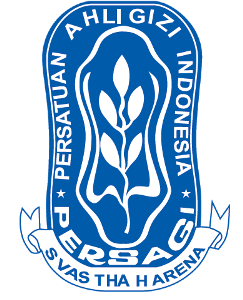Improving the Knowledge of Health Cadres for Stunting Prevention through Emotional Demonstration Technique
DOI:
https://doi.org/10.21776/ub.ijhn.2023.010.02.3Keywords:
Cadres, Emotional Demonstration Techniques, Knowledge, Nutrition, StuntingAbstract
References
- Mahudeh, Rohmah N, Adriani SW. Correlation Between History of Infectious Disease with Stunting in Toddler. Journal of Nursing Science Update (JNSU). 2023;10(2):193–200. DOI: 10.21776/ub.jik.2022.010.02.15
- Mutasa K, Tome J, Rukobo S, Govha M, Mushayanembwa P, Matimba FS, et al. Stunting Status and Exposure to Infection and Inflammation in Early Life Shape Antibacterial Immune Cell Function Among Zimbabwean Children. Front Immunol. 2022;13(1). DOI: 10.3389/fimmu.2022.899296
- Indonesian Ministry of Health. Main Results of Riskesdas 2018. Jakarta; 2018.
- Indonesian Ministry of Health. Handbook: National, Provincial and District Nutrition Status of Indonesia (SSGI) Results 2021. 2021.
- National Team for the Acceleration of Poverty Reduction in Indonesia. 100 Districts/Cities for Stunting Intervention [Internet]. Jakarta; 2017 [cited 2023 Jul 18]. Available from: https://www.tnp2k.go.id/images/uploads/downloads/Binder_Volume1.pdf
- Berkat Village Group. Field Experience Learning Activity Report in Berkat Village, Sirah Pulau Padang Sub-district, Ogan Komering Ilir Regency. Indralaya; 2018.
- Triana W, Verza E, Razi P. The Effect of Emotional Demonstration Methods and Video Learning on Hand Washing on Knowledge and Skills of Housewives. Nsc Nursing. 2021;1(2):13–27. DOI: 10.32549/OPI-NSC-59
- Dewi Sukma Septiani B, Hairun Nisa S. The Effect of Nutrition Education With the Emotional Demonstration Method on Mother’s Awareness in Feeding Underweight Toddlers. Jambura Journal [Internet]. 2021 [cited 2023 Oct 10];3(2):241–9. Available from: https://doi.org/10.35971/jjhsr.v3i2.10551
- Triana W, Razi P, Veriza E, Sayuti S. Learning Model Methods Emotional Demonstration (Emo Demo) in Prevention of Non-Communicable Diseases: Quasi-Experimental Study. Nsc Nursing. 2022;4(4):59–77. DOI: 10.32549/opi-nsc-77
- Aunger R, Curtis V. Behaviour Centred Design: Towards an Applied Science of Behaviour Change. Health Psychol Rev. 2016;10(4):425–46. DOI: 10.1080/17437199.2016.1219673
- Onis M de, Branca F. Childhood Stunting: A Global Perspective. Matern Child Nutr. 2016;12(1):12–26. DOI: 10.1111/mcn.12231
- Nurhasanah N, Rachmawati DA, Sutejo IR. Defisit Berat Asupan Energi dan Protein Berhubungan dengan Stunting pada Anak Usia 12-24 Bulan di Desa Plerean, Sumberjambe, Jember. Journal of Agromedicine and Medical Science (AMS). 2021;7(2):116–20. DOI: 10.19184/ams.v7i2.24828
- Wulandary W, Sudiarti T. Nutrition Intake and Stunting of Under-Five Children in Bogor West Java, Indonesia. Food Sci Nutr. 2021;7(3):1–7. DOI: 10.24966/FSN-1076/100104
- Millward DJ. Nutrition, infection and stunting: The roles of deficiencies of individual nutrients and foods, and of inflammation, as determinants of reduced linear growth of children. Nutr Res Rev. 2017;30(1):50–72. DOI: 10.1017/S0954422416000238
- Walson JL, Berkley JA. The impact of malnutrition on childhood infections. Curr Opin Infect Dis. 2018;31(3):231–6. DOI: 10.1097/QCO.0000000000000448
- Khan S, Zaheer S, Safdar NF. Determinants of Stunting, Underweight and Wasting among Children < 5 Years of Age: Evidence from 2012-2013 Pakistan Demographic and Health Survey. BMC Public Health. 2019;19(1):1–15. DOI: 10.1186/s12889-019-6688-2
- Black RE, Heidkamp R. Causes of Stunting and Preventive Dietary Interventions in Pregnancy and Early Childhood. Nestle Nutr Inst Workshop Ser. 2018;89(1):105–13. DOI: 10.1159/000486496
- Titaley CR, Ariawan I, Hapsari D, Muasyaroh A, Dibley MJ. Determinants of the Stunting of Children Under Two Years Old in Indonesia: A Multilevel Analysis of the 2013 Indonesia Basic Health Survey. Nutrients. 2019;11(5):1106–19. DOI: 10.3390/nu11051106
- Camelia V. Hubungan Antara Kualitas & Kuantitas Riwayat Kunjungan Antenatal Care (ANC) Dengan Stunting Pada Balita Usia 24-59 Bulan Di Kecamatan Pujon Kabupaten Malang. Journal of Issues in Midwifery. 2020;4(3):100–11. DOI: 10.21776/ub.JOIM.2020.004.03.1
- Lestari ED, Hasanah F, Nugroho NA. Correlation between Non-Exclusive Breastfeeding and Low Birth Weight to Stunting in Children. Paediatr Indones. 2018;58(3):123–7. DOI: 10.14238/pi58.3.2018.123-7
- Purnamasari H, Shaluhiyah Z, Kusumawati A. Training of Posyandu Cadres as an Effort to Prevent Stunting in Toddlers in the Working Area of Margadana Health Center and South Tegal Health Center in Tegal City. Jurnal Kesehatan Masyarakat (e_Journal). 2020;8(3):432–9. DOI: 10.14710/jkm.v8i3.26580
- Masters K. Edgar Dale’s Pyramid of Learning in medical education: A literature review. Med Teach. 2013;35(11):e1584-93. DOI: 10.3109/0142159X.2013.800636
- Mostafavi F, Zamani-Alavijeh F, Mansourian M, Bastami F. The promotion of healthy breakfast and snacks based on the social marketing model: a mixed-methods study. J Health Popul Nutr. 2021;40(22):1–11. DOI: 10.1186/s41043-021-00245-y
- Yunitasari E, Rahayu M, Kurnia ID. The Effects of Lecture, Brainstorming, Demonstration (CBD) to Mother’s Knowledge, Attitude, and Behavior About Stunting Prevention on Toddler. Systematic Reviews in Pharmacy. 2020;11(6):1131–6. DOI: 10.31838/srp.2020.6.163
- Hall C, Syafiq A, Crookston B, Bennett C, Hasan MR, Linehan M, et al. Addressing Communications Campaign Development Challenges to Reduce Stunting in Indonesia. Health N Hav. 2018;10(12):1764–78. DOI: 10.4236/health.2018.1012133
- Dibley MJ, Alam A, Fahmida U, Ariawan I, Titaley CR, Htet MK, et al. Evaluation of a Package of Behaviour Change Interventions (Baduta Program) to Improve Maternal and Child Nutrition in East Java, Indonesia: Protocol for an Impact Study. JMIR Res Protoc. 2020;9(9):e18521-37. DOI: 10.2196/18521
- Prendergast AJ, Humphrey JH. The stunting syndrome in developing countries. Paediatr Int Child Health. Maney Publishing; 2014;34(4):250–65. DOI: 10.1179/2046905514Y.0000000158
Downloads
Published
How to Cite
License

This work is licensed under a Creative Commons Attribution-NonCommercial 4.0 International License.

This work is licensed under a
Creative Commons Attribution-NonCommercial 4.0 International License




















